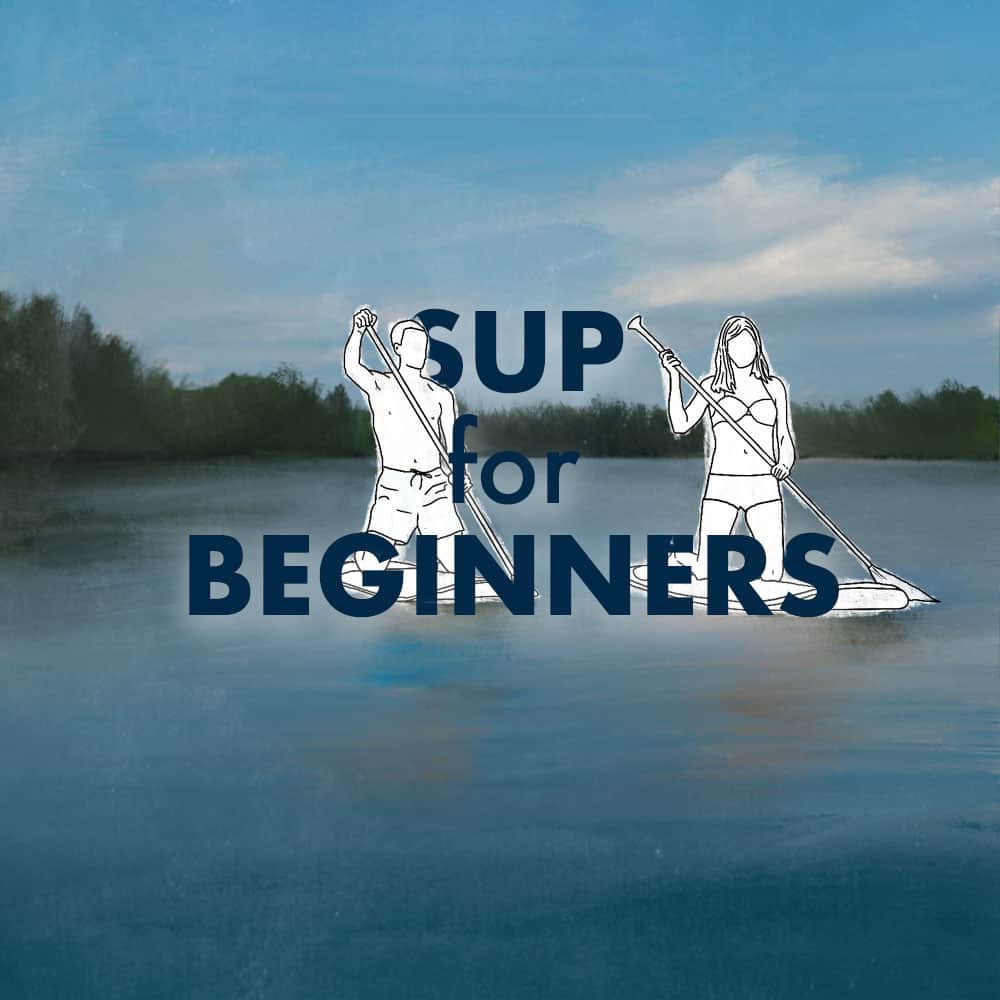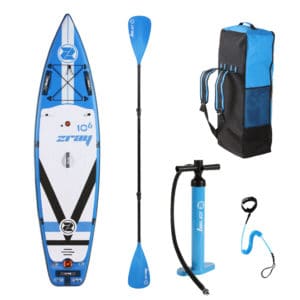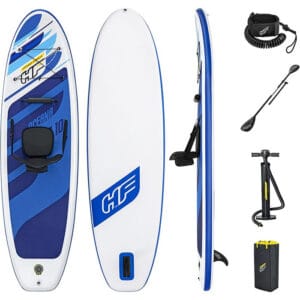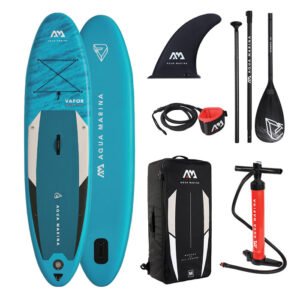Stand Up Paddling is extremely fun and also very easy to learn. You move around outdoors on lakes, rivers or the ocean and get a great full body workout. Best of all, it’s suitable for people of all ages, body types and skill levels.
With all these reasons, it’s no wonder that stand-up paddling has become increasingly popular in recent years. We are always happy to see the community of passionate paddlers continue to grow, so we have put together the following guide.
With the following tips and tricks for beginners and novices, a safe and easy entry into Stand Up Paddling will definitely succeed.
1. The Right Board Is The Basis
Without getting too technical and theorizing about different board types and masses, etc., having the right board is the basis for quick success. A wide all-round board with a lot of volume, is the right choice for the first attempts. By lying still and stable in the water, it helps you stay balanced and quickly gain confidence.
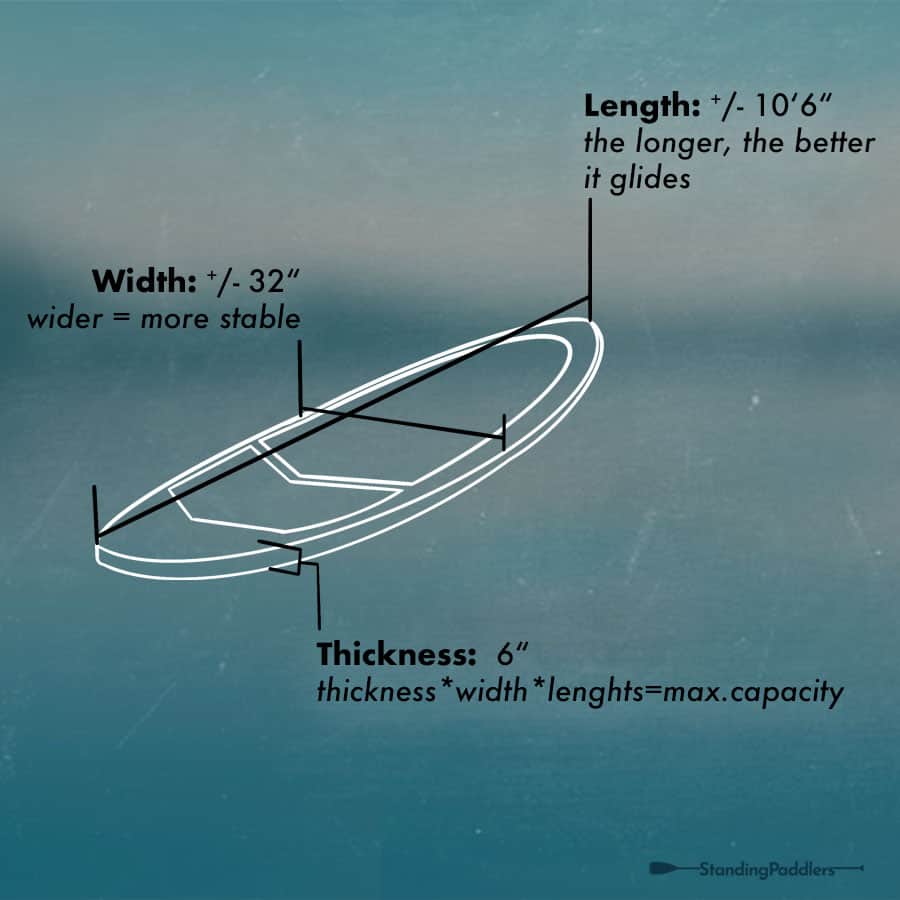
If you want to try Stand Up Paddling just once, renting the equipment is certainly a good idea. The experts on site will equip you with the right material.
If you want to buy your own equipment, we will soon write a detailed guide to board selection and articles about the best boards for beginners.
2. Prepare The Equipment
The beauty of SUP is how little equipment you need. Clothing, board, paddle, life jacket and leash is all that is necessary.
When it comes to clothing, dress appropriately for the water temperature. In summer normal swimwear, in the transition season neoprene and in winter dry suit is advisable. A life jacket or PFD (Personal Floating Device) is recommended or even mandatory depending on regional regulations.
Of course, if you are using an inflatable SUP, they will need to be inflated. And before your’re asking, yes the pressure indicator of your pump is not broken. Very often you read comments and reviews on the Internet that they have pumped up their board and the gauge has not moved even after “longer” pumping. Most often, this is absolutely normal. The needle of the pressure indicator only moves when a certain pressure is reached. It usually takes only a short time for the SUP to look full, but then you have to keep pumping. This is because the high air pressure in the board is what gives it its stiffness in the first place.
The paddle is adjusted according to the body size. To do this, place it on the ground next to you, extend your arm and lengthen the paddle so that the handle reaches your wrist.
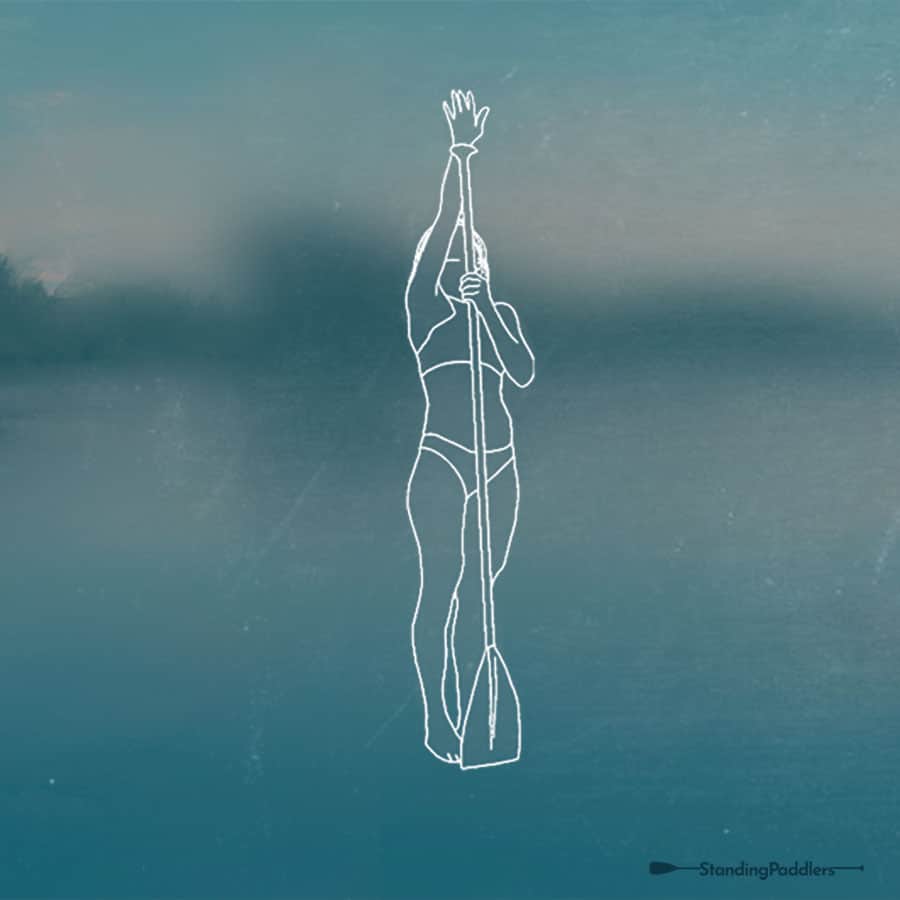
The leash, the connection between you and the board is attached to your foot. Please always wear them. After a fall into the water, a light wind is enough and the board drifts away from you. The leash ensures that your board always remains within your reach as a saving island.
3. Off Into The Water
First, tip the board onto the rails (side). Then you can grab the carrying handle and lift the board easily under your arm and go into the water. Carefully place the board in the water and make sure it is deep enough. Otherwise, it is possible that the fins may drag across the bottom and cause damage.
4. Get On The Board On Your Knees
Get on the board in a kneeling position. The low center of gravity makes it easier to maintain balance. Kneeling you can start to practice paddling and get used to the board.
But even later, in shallow water, you always start on your knees first. This avoids the risk of hitting the bottom when falling.
The ideal position on the SUP is usually very central in the middle of the board. You can orient yourself by the carrying handle. This is located at the point where the board is balanced. Once you’ve found the ideal point on the board and gained enough confidence, you’re ready to navigate deeper waters.
5. Stand Up
Once the water is deep enough, you can try to stand up. This is not so difficult if you consider the following points and have some practice.
In the kneeling position, place your paddle across the board. With both hands on the paddle shaft you fix it. Now carefully place one foot first. Already here, make sure that you will be in the right position at the end. The ideal point is at shoulder-width distance at the height of the carrying handle.
Once you have one foot stable and the other leg still kneeling, you can carefully take the second foot forward. If you are still standing with both feet in a crouched position, you can now slowly straighten your upper body while looking forward. While doing this, you hold the paddle in your hands and take it up with you.
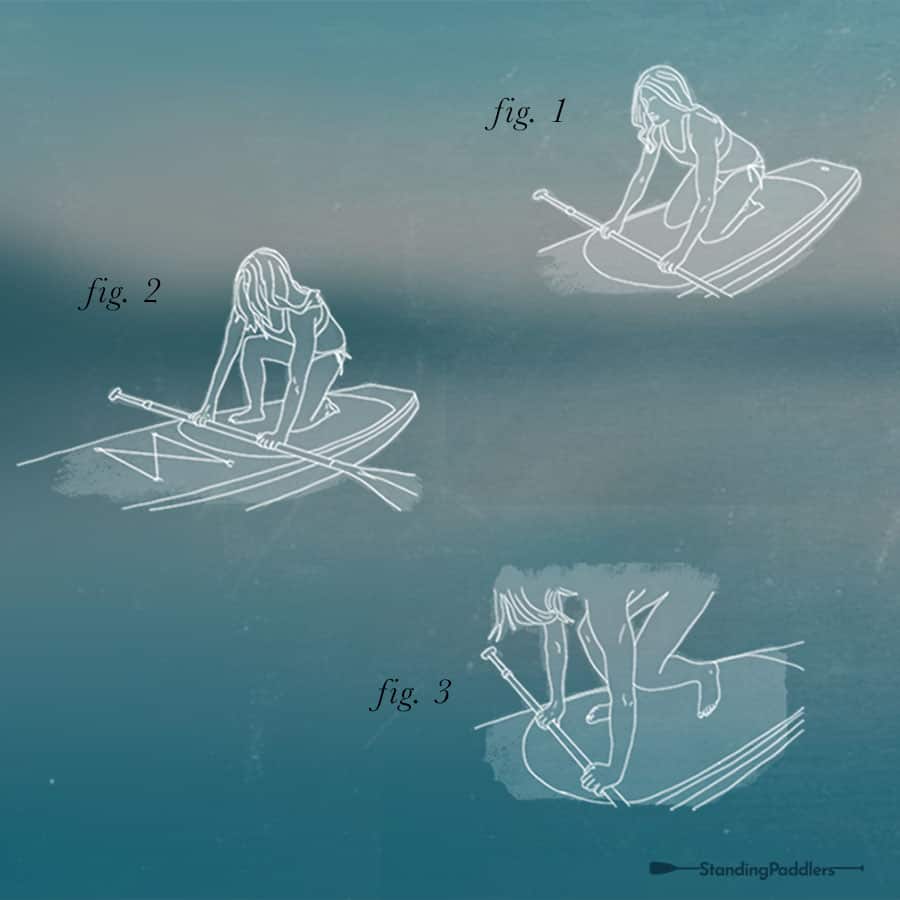
Many make the mistake of looking down at the standing surface when standing up and also later when paddling. However, for balance it is much better to fix a fixed point in the distance with the eyes.
Another tip is to stand up when the board is in forward motion. Here it is similar to riding a bike, it is easier to keep the balance when you have a certain speed.
As soon as you stand upright, your knees may be a little shaky at first. However, this will quickly subside as soon as you get used to compensating for the small movements of the board.
Congratulations you are now a StandingPaddler 😉
6. Falling And Get Back On
A few water landings are just part of it. But don’t stand still, cramped up for safety. This is rather counterproductive, because Stand Up Paddling requires agility.
If you notice that you are losing your balance try not to fall on the board. The board is hard and the water is soft. Try to fall sideways into the water as flat as possible. Never head first and not with legs outstretched.
Something we’ve heard from several people is that it can help to take your first plunge into the water right at the beginning, maybe even on purpose. As soon as you realize that the landing in the water is actually soft, it takes away the fear of falling and you can be much more relaxed on the board from then on.
If you landed in the water, you will now be glad to be connected to the board thanks to the leash. Otherwise, the board is often pushed away from you by the fall.
To get back on the board, first lie flat in the water as if you were swimming. In the middle of the SUP you can hold on to the carrying handle. Now create some thrust with a few strong kicks with your legs behind you and use that momentum to pull yourself flat on your stomach onto the SUP. From here, turn in the right direction and you can return to a kneeling position.
7. The Right Paddling Technique
The correct posture is not only the basis for a good stability on the board, but also for the right paddle stroke.
A beginner’s mistake that is often seen is not holding the paddle properly in the hands.
Correct is one hand on top of the pommel and the second on the paddle shaft. The distance between the two hands should be approximately so that when you hold the paddle above your head, your elbows form a right angle. In addition, the paddle blade should point forward with the curvature. As a rule, the manufacturer’s brand logo is printed there on the front.
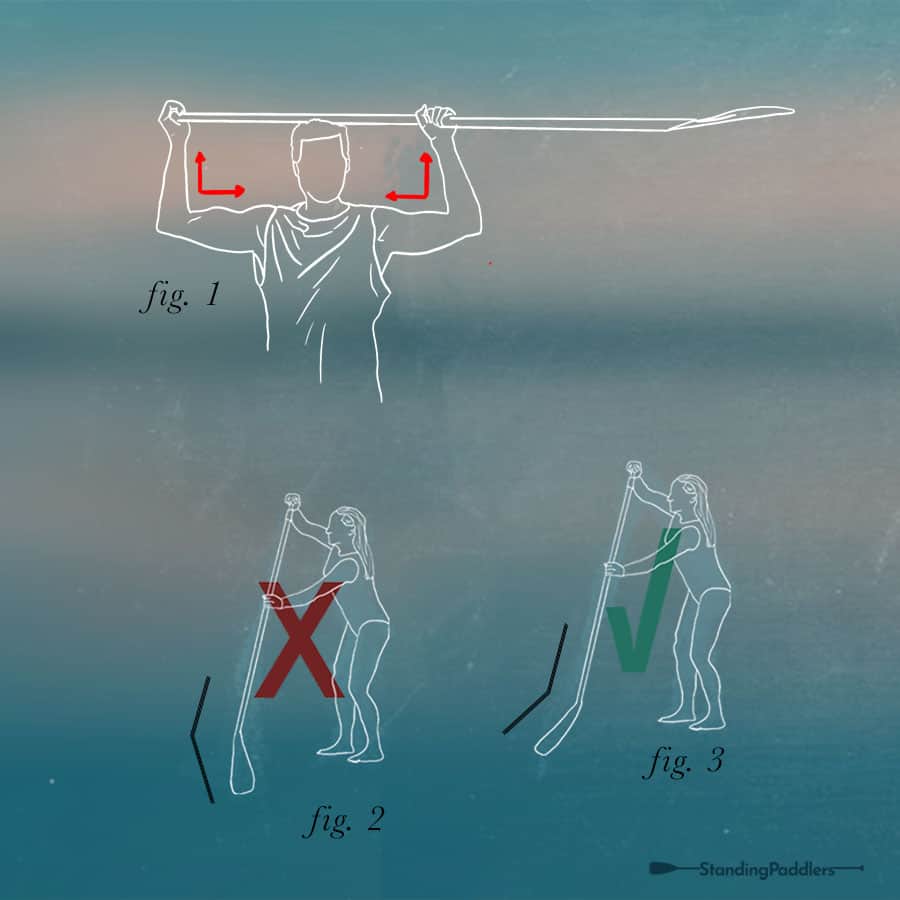
During the paddling movement, the lower hand on the shaft acts as the pivot point and the upper hand guides the movement.
For an effective paddle stroke, dip this into the water as far in front of you as possible. The paddle blade should be completely submerged up to the base of the shaft. Now pull the paddle as close as possible along the edge of the board to about your heels. Pulling further back makes no sense, because then only the water splashes up and no real propulsion is generated.
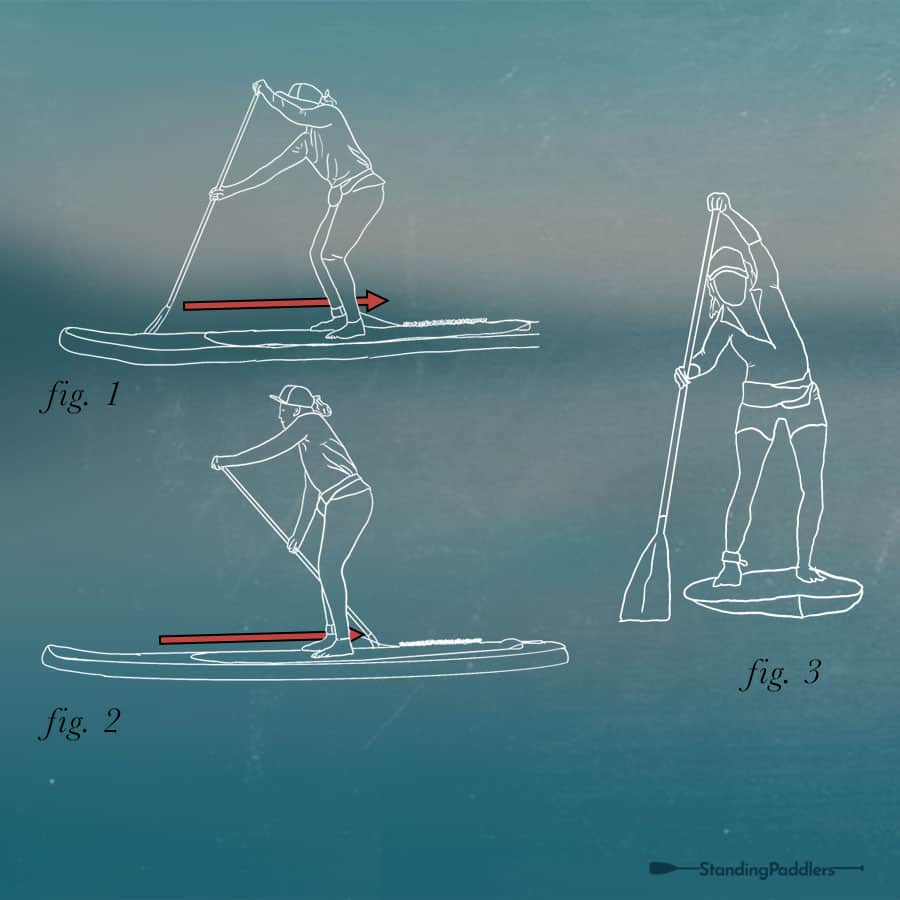
Repeat this movement on each side until you feel that the board is slowly making a turn and then change the paddle side. When changing the paddle side, the hands naturally swap positions. The lower hand on the shaft then comes to the top of the pommel and vice versa.
8. Safety First
Although this point is listed last, Safety First always applies.
Never overestimate your own abilities. In the beginning, it is better to stay close to the shore and practice with a companion.
Although paddling on rivers can be tempting, the right place to practice is a calm lake or the ocean with no waves. Also be aware of weather conditions and never paddle away from shore with strong offshore winds. Because with a tailwind, it can quickly happen that you drift further than you would like.
Bonus. Have Fun
We hope this guide will help you get started with Stand Up Paddling. Of course, it may take a few times before you feel completely confident on the water. But be patient with yourself and practice with confidence that it will be worth it. Besides, you never stop learning. When you have mastered the basics, there are always points at which you can develop further.
We are happy to share this unique experience of paddling over water with you.
